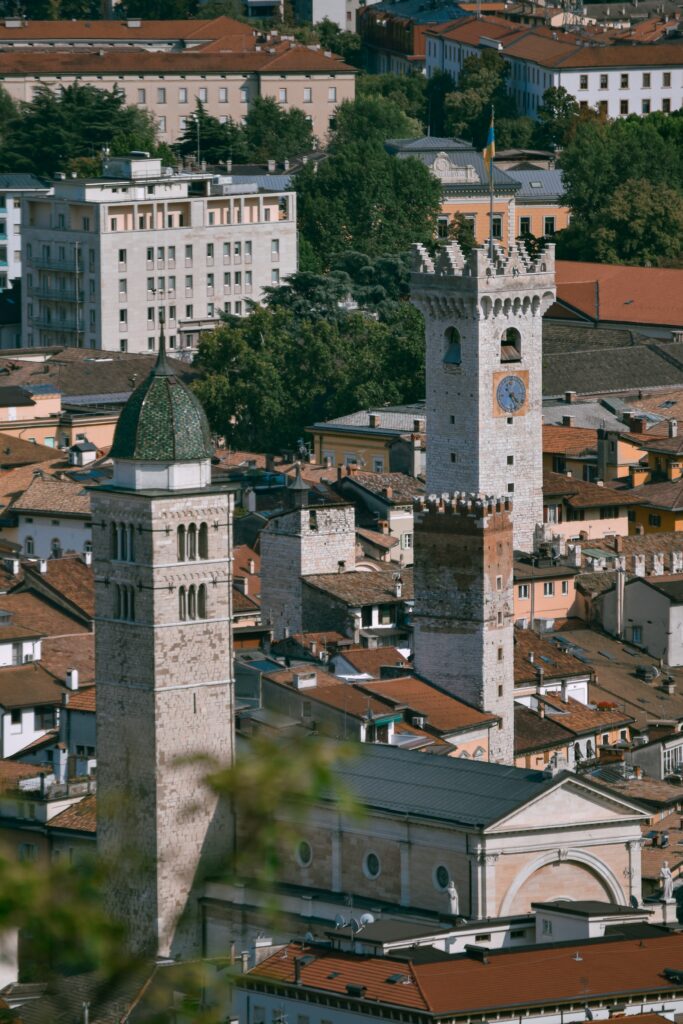
Infirmation:
Trentino–Alto Adige/Südtirol, autonomous regione (region), northern Italy, comprising the province (provinces) of Bolzano-Bozen (north) and Trento (south). Historically, the region includes the area of the medieval ecclesiastical principalities of Trento (Trent) and Bressanone (Brixen), which were later contested between the counts of Tirol and Venice. Passing to Italy after World War I, the area was known as Venetia Tridentina until 1947 and was established as an autonomous region by the constitution of 1948. That status was further clarified and amended by statute in 1972 and in the Italian constitution of 2001. The population of Bolzano is largely German-speaking, that of Trento Italian-speaking. Members of the provincial parliaments also sit in the regional parliament, which meets for two years alternately in each provincial capital and with alternate Italian-speaking and German-speaking chairmen.
Most of the region is mountainous terrain above 3,000 feet (900 metres), including the Ötztal, Brenner, Zillertal (Aurine), and Pusteria Alps to the north, the Ortles and Adamello groups in the west, the Dolomites in the east, and the high plateaus of the interior. Some peaks of the border Alps are among the highest in Europe, notably Palla Bianca (Weisskugel; 12,264 feet [3,738 metres]) in the Ötztal Alps. Passes breaching these Alps are the Stelvio into Switzerland, the Resia and the Brenner into Austrian Tirol, and the Dobbiaco or Pusteria Valley (Pustertal) into Austrian Kärnten (Carinthia). The chief rivers draining the mountain masses are the upper Adige (Etsch), the Isarco (Eisack), the Noce, and the Avisio. All are tributaries of the Adige River, which flows south down the principal valley through Bolzano and Trento cities to Verona in the Lombardy Plain. A large part of Bolzano-Bozen province consists of a roughly rectangular area between the Adige, Passiria, and Isarco valleys; much of it is a plateau averaging from 4,300 to 5,600 feet (1,300 to 1,700 metres). The valleys of the larger rivers are well-populated and fertile, especially in the south. In 1966 great storms brought landslides and floods with loss of life, disruption of communications, and damage to property.
Much of the region is forested, and a timber industry has been developed, but the valleys are quite densely populated and intensively cultivated. Vines and fruit trees are grown extensively on the hillsides. Corn (maize), wheat, oats, and barley are grown in the south, while rye is more common north of Bolzano city. Cattle raising and dairy farming are found on the lower hills and slopes in the valleys. Deposits of zinc, lead, copper, and iron, along with hydroelectric power stations on the Adige and Noce rivers, have encouraged the development of mining and manufacturing. Tourism in both summer and winter is also of prime importance. From the Lombardy Plain several roads converge on Trento. Road and railway then follow the main Adige River valley to Bolzano city and from there connect with Switzerland, the Brenner Pass, and Carinthia. Area 5,258 square miles (13,618 square km). Pop. (2011) 1,029,475; (2014 est.) 1,055,934.
The Editors of Encyclopaedia Britannica
This article was most recently revised and updated by Michael Ray.
